It's no secret that paid social is drastically on the rise. Social advertising spend jumped 50% year-over-year in the last quarter of 2015. Social media ad revenue is expected to reach $35.90 billion by 2017, reaching a staggering 16% of the total global digital ad market.
Facebook (including Instagram) unsurprisingly comprises a big piece of this pie, making up an estimated 65.5% of all 2015 social ad spend. This is driven by changes in their CPC model, launch of Instagram ads & the addition of powerful new features.
This post will arm you with 10 important tips & features to ensure you're getting the most out of this channel.
1. Facebook Lead Ads
One of the most recent campaign types added by Facebook are Lead Ads. This campaign type allows advertisers to collect lead data without a landing page and directly through a form without leaving Facebook.
Some early advertisers found Lead Ads to result in a 4x reduction to their CPL (according to Facebook).
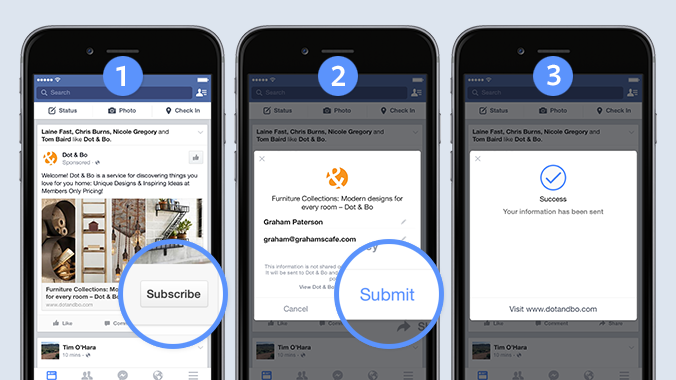
To get started with Lead Ads, simply:
1. Create a new campaign with the “Lead Generation” objective
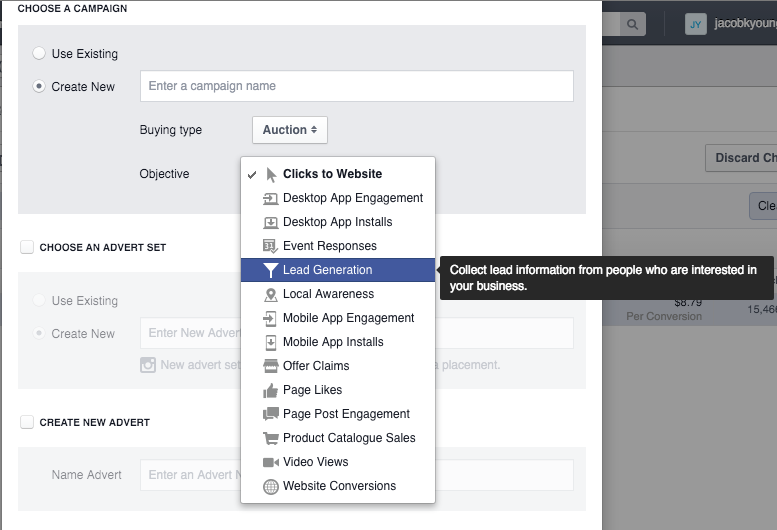
2. Build out your campaign/advert set, as you would for any campaign
3. Create your lead form at the advert level
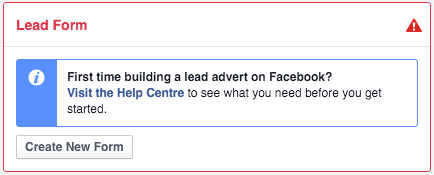
4. Choose the questions you'd like added and optionally add up to three custom questions
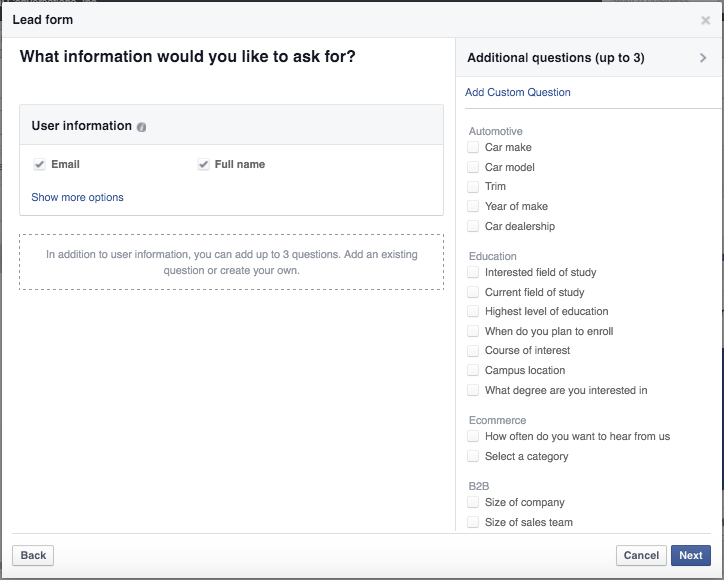
5. Link to your privacy policy, add your disclaimer and destination URL
6. Customize your form
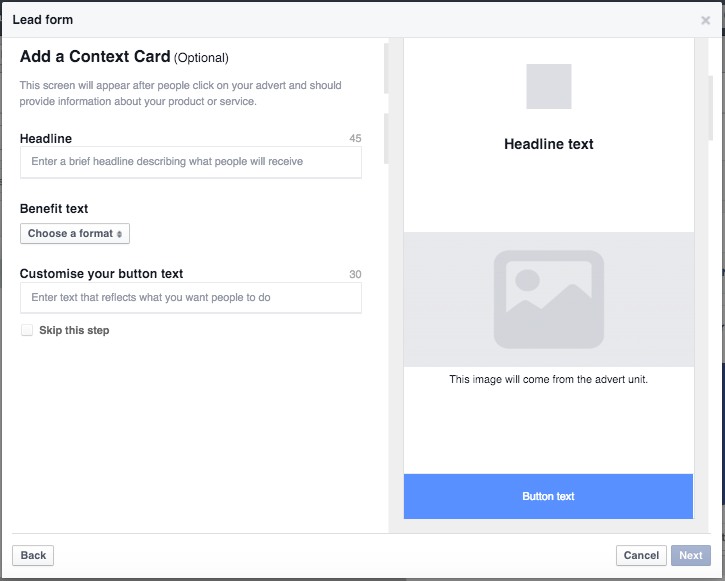
7. Preview then create your form
Now you're ready to get started with Facebook's newest and most powerful lead generation tool.
Tip: Twitter has had this campaign type for years, they call it Twitter Lead Cards.
2. Reporting, Reporting, Reporting
Some of the biggest wins are always found within the reporting section. One of the most important parts of reporting is the 'Breakdown' section.
- Are your mobile placements converting?
- What age group has the strongest CPA?
- What regions aren't converting?
- What gender is responding to your adverts?
These are all important questions that can be answered under the 'Breakdown' drop-down.

In this example, the Instagram placement converted a near 500% better than mobile news feed placement, at a fraction of the CPA. Knowing this, we'd shift more spend to Instagram and remove budget from the mobile news feed placement to maximize performance at our budget (if there's volume available).
3. Attribution models
It's important to understand Facebook's attribution models, where to change the view and what makes sense for your conversion goal. These are the 'rules' for how each conversion is counted, in regards to the timeframe after an interaction with your advert and the method of the interaction (click or view).
This is important to take note of so you have a clear understanding of the value of your conversions and how they compare to the other networks you may be running.
Within 'Manage adverts', the option to change the attribution model can be found under 'Columns' > 'Customize Columns…' > 'Change Attribution Window'.
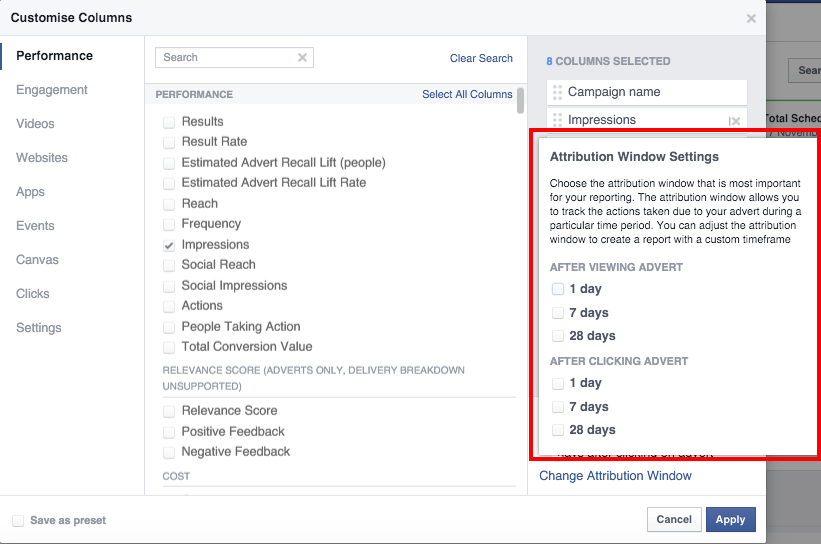
4. Test Instagram
Since September 2015, Instagram placements have been made public in 30+ countries within the Facebook Ads Dashboard. Getting started with this is as simple as connecting an Instagram account and choosing the Instagram placement.
Break out some test budget and see how this placement compares.
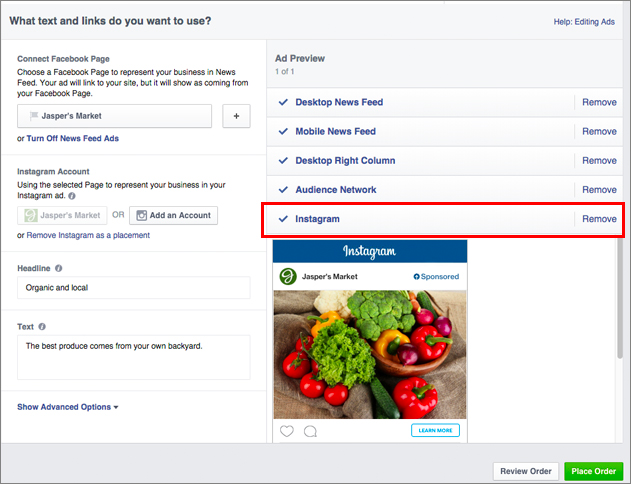
5. Lookalike audiences
I've found lookalike audiences to be one of the most effective targeting methods on paid social.
A lookalike audience is a targeting criteria where Facebook generates an audience of user who are similar to your current customers or audience.
This audience can be based off an email list, segments of your Facebook Pixel or any conversion goals you have set up. Facebook matches these users with Facebook profiles then finds similarities in demographics, interests, behaviors, etc. Lastly, Facebook uses these finding to generate a list of similar Facebook users which you can target in your campaigns.
Learn how to create a lookalike audience here.
6. Keep an eye on Facebook's location options
An often overlooked targeting criteria is Facebook's more granular location targeting options. It's important to keep this in mind while creating your campaigns and use the targeting option that makes the most sense for your business.
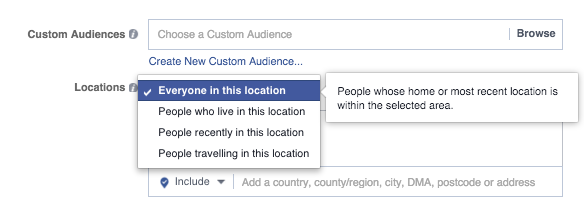
Are you trying to target people living in a specific city, or all people within this city? These are two very different targets.
Take for example, a local service business operating only in downtown SF. You wouldn't want to be targeting people visiting for the weekend, or commuting in for work.
7. Speak to your audience
With Facebook's granular targeting methods, in most cases you know who you're speaking to (at least the interest, behaviours, etc. that define your audience).
Use this knowledge to tie copy and creative closely with each specific audience you're targeting.
Targeting a recent homebuyer? How about something like “Your new home would be complete with [Brand Name's] contemporary/ modern furniture line”.
8. Remarketing
All digital marketers know the importance of remarketing, so don't level this out of your Facebook Ads strategy be left out.
Make sure to take advantage of Facebook's audience segmentation options, where you can include/exclude specific pages & domains, as well as choose the remarketing window length.
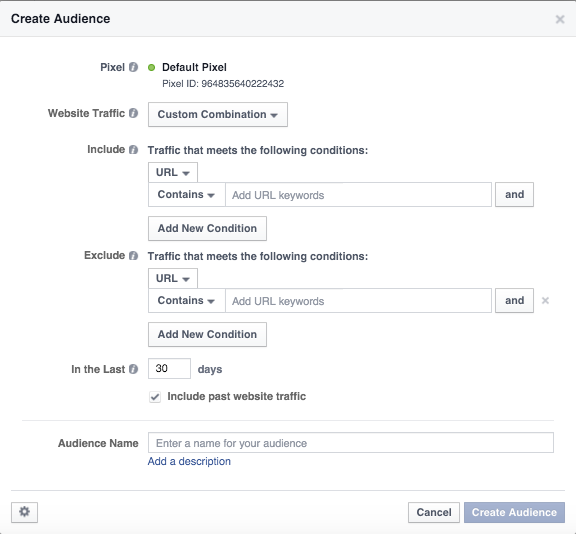
This feature allows advertisers to remarket specific products to users who've previously viewed or added them to their cart. The creative and copy of your ads will dynamically change based on what products your visitors have viewed.
9. Test multiple creative and copy
Always test many creative and copy variants to see which ones resonate best with your audience. Facebook will optimize ad serving based on performance and your conversion goal.
An interesting and relatively new creative type I recommend testing is the 'Carousel', which allows you to fit multiple images and links into a single creative.
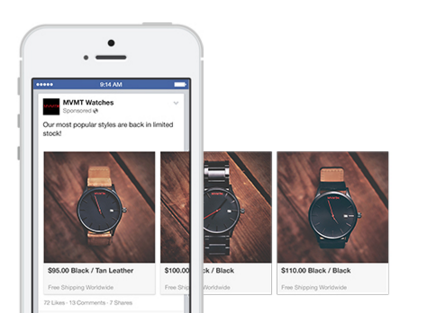
This creative type has been found to reduce your CPA by about 30-50% & decrease your CPC by 20-30% (according to Facebook).
Use this creative type to:
- Showcase multiple products
- Highlight multiple features
- Create a larger canvas
- Outline benefits
- Tell your brand's story
Tip: Don't forget to run a statistical significance test to see if the improvement you're seeing is indeed valid and not just by chance.
10. Breakout campaigns by placement
The different placements offered by Facebook perform very differently. It's important to keep an eye on their performance and where your spend is being directed (details of how to do this are found in #2 above).
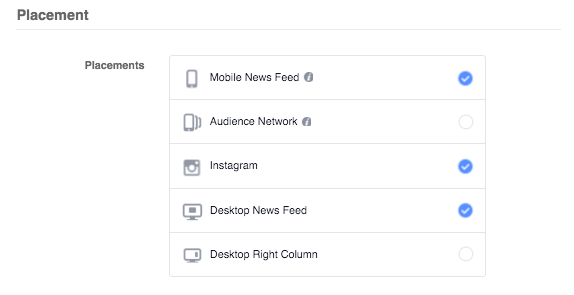
When optimizing for clicks, I find most of your budget will get pushed to mobile or audience network (since these have the most effective CPC), however these placements may typically not have the best overall performance.
In most cases, I find it makes sense to break out your campaigns by placement (or at least mobile vs. desktop). This is especially true if you're setting manual bids, or if your campaign is set to optimize for clicks.
Conclusion
I hope you find these Facebook Advertising tips & features useful. If you have any questions or additional tips/features that you think merit discussion, let us know if the comments section, or email me at jacob@cleverzebo.com.
About the Author: This guest post is written by Jacob Young, world-traveling digital nomad and Senior Manager, Ad Operations at Clever Zebo. Currently writing from the Co-Work office in Sayulita, Mexico. To learn how Clever Zebo can jumpstart your paid social efforts, shoot us a note at igor@cleverzebo.com or Tweet us at @CleverZebo.
Walang komento:
Mag-post ng isang Komento